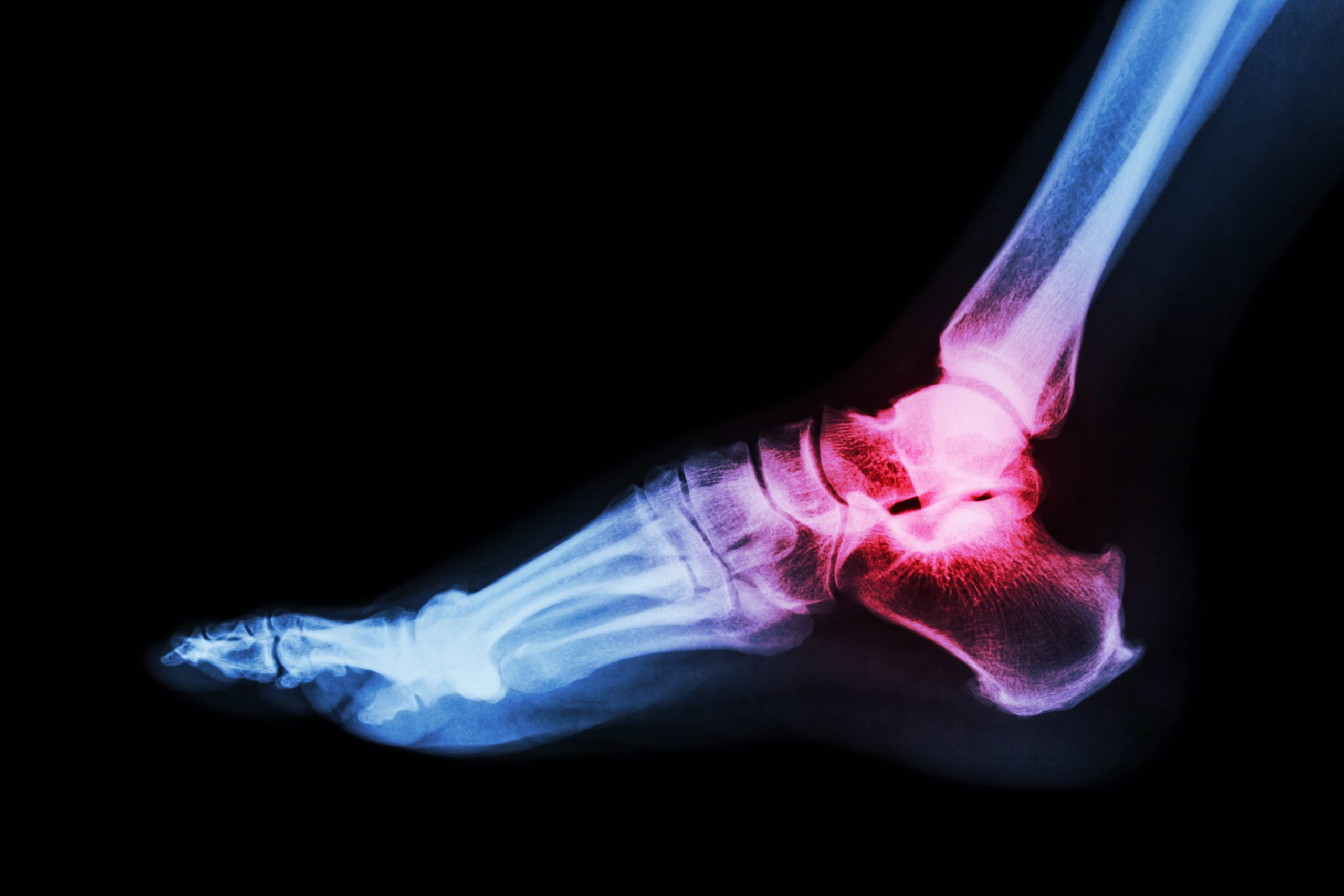What is Ankle Arthritis?
What is arthritis?
If you notice swelling, inflammation, or pain around your ankle, you may be suffering from ankle arthritis.
While there are more than 100 forms of arthritis, all of them cause pain and swelling of the ankle and foot when left untreated.
Arthritis is very common but is not well understood. Actually, “arthritis” is not a single disease; it is an informal way of referring to joint pain or joint disease. People of all ages, sexes and races can and do have arthritis, and it is the leading cause of disability in America. More than 50 million adults and 300,000 children have some type of arthritis. It is most common among women and occurs more frequently as people get older.
Common arthritis joint symptoms include swelling, pain, stiffness and decreased range of motion. Symptoms may come and go. They can be mild, moderate or severe. They may stay about the same for years but can progress or get worse over time. Severe arthritis can result in chronic pain, inability to do daily activities and make it difficult to walk or climb stairs.

What causes ankle arthritis?
When you stand, walk, or run, your feet and ankles provide shock absorption and balance to help you move around properly, but over time, the joints in your feet and ankles can become irritated and inflamed, making it difficult to move around without pain and discomfort.
Osteoarthritis, the most common form of arthritis, occurs when the cartilage surrounding your joints breaks down due to wear and tear. Eventually, the protective barrier surrounding your ankle joints will disappear, causing your bones to start rubbing together.
Some of the most common causes of ankle arthritis include:
- Rheumatoid arthritis, an autoimmune disease that causes chronic joint inflammation
- Previous ankle injuries that never healed properly
- Joint infection
- Excessive weight gain, which puts pressure on your ankle joints
- Family history of arthritis
Without treatment, ankle arthritis worsens over time, especially in older adults, so it’s important to seek help at the first sign of joint pain and inflammation around your ankle.
The most commonly seen type of arthritis seen in our centers is post-traumatic ankle arthritis. This is seen after injuries such as ankle sprains and ankle fractures.
What can be done to prevent arthritis?
Arthritis, specifically in the ankle, can be prevented by appropriate strengthening of the lower extremity muscles, daily stretching and fall risk prevention. There are supplements such as glucosamine and chondroitin sulfate which have not been shown to assist with prevention of arthritic conditions. Maintaining a healthy and balanced diet and lifestyle can often times be more productive. Arthritic conditions such as gout can be prevented by certain gout diet protocols. Speak to your healthcare professional regarding these protocols.
Locations
Patients

Dr. James Cottom
Lorem ipsum dolor sit amet, consectetur adipiscing elit, sed do eiusmod tempor incididunt ut labore et dolore magna aliqua. Ut enim ad minim veniam, quis nostrud exercitation ullamco laboris nisi ut aliquip ex ea commodo consequat. Duis aute irure dolor in reprehenderit in voluptate velit esse cillum dolore eu fugiat nulla pariatur. Excepteur sint occaecat cupidatat non proident, sunt in culpa qui officia deserunt mollit anim id est laborum.

Dr. Jeff McAlister
Lorem ipsum dolor sit amet, consectetur adipiscing elit, sed do eiusmod tempor incididunt ut labore et dolore magna aliqua. Ut enim ad minim veniam, quis nostrud exercitation ullamco laboris nisi ut aliquip ex ea commodo consequat. Duis aute irure dolor in reprehenderit in voluptate velit esse cillum dolore eu fugiat nulla pariatur. Excepteur sint occaecat cupidatat non proident, sunt in culpa qui officia deserunt mollit anim id est laborum.
Join the Email List
We want to resource you with the best options for good ankle repair and rehab
Contact Us
If you have any questions about our services or how we can help, please contact us so we can start working with you on the road to restoring your ankle to it's full potential.

